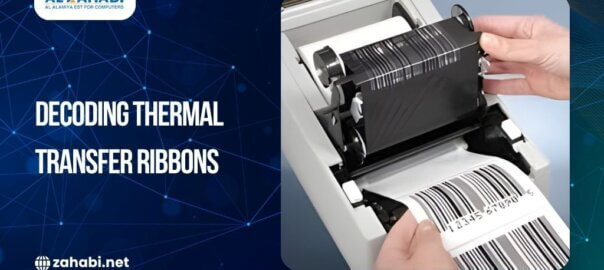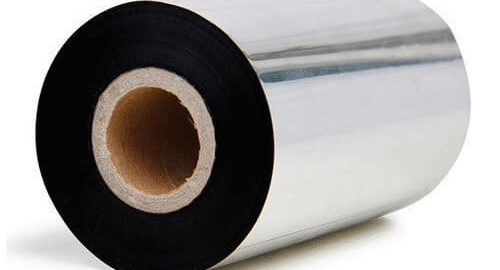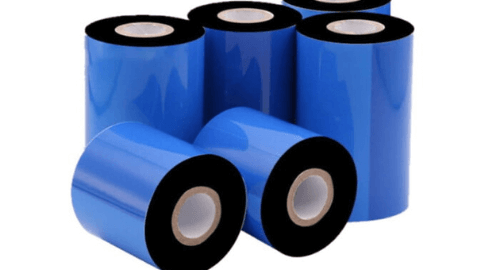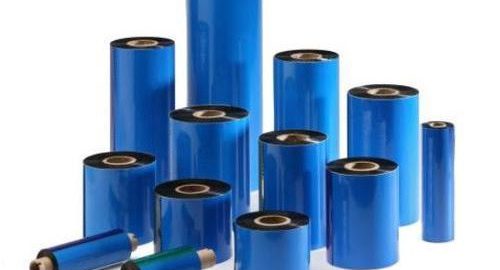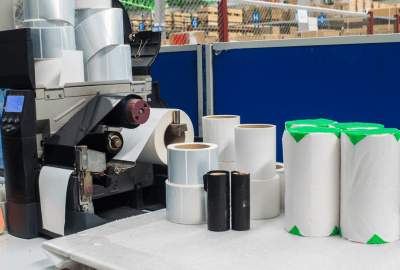
In the world of barcode printing, ensuring durability, clarity, and cost-efficiency is critical. A key component that often goes unnoticed is the barcode ribbon, which plays an essential role in thermal transfer printing. But did you know there are different types of barcode ribbons, each offering unique benefits depending on your industry and application?
This blog will help you compare barcode ribbons- Wax, Resin, and Wax-Resin based on durability, compatibility, cost, and application, so you can make the right choice for your ID card printing and barcode label needs.
What is a Barcode Ribbon?
A barcode ribbon is a PET (Polyester) film coated with a blend of ink and adhesive, used in thermal transfer printers. When heated, the ink is transferred from the ribbon onto the label, creating high-quality barcodes or other designs. The composition of the coating (wax, resin, or both) determines the print quality, durability, and suitability for different label materials.
Types of Barcode Ribbons and Their Comparison
- Wax Barcode Ribbons
Best for: Paper labels, low-cost applications
Durability: Low to moderate
Cost: Low
Key Features:
- Most economical option.
- Resistant to water and light moisture.
- Vulnerable to scratches, smudges, heat, chemicals, and prolonged sunlight.
- Widely used in retail, logistics, and short-term labeling.
Limitations:
While affordable, wax ribbons are not suited for harsh environments or long-term use, as they can fade or smudge easily.
- Resin Barcode Ribbons
Best for: Synthetic labels (polyester, polypropylene, vinyl), extreme conditions
Durability: Very high
Cost: High
Key Features:
- Provides the most durable and high-quality prints.
- Highly resistant to abrasion, chemicals, high temperatures, and harsh outdoor conditions.
- Compatible with a wide variety of label materials.
Limitations:
Their biggest downside is the high cost, making them less viable for low-budget or general-purpose applications.
- Wax-Resin Barcode Ribbons
Best for: Paper and synthetic labels, moderate durability needs
Durability: Moderate to high
Cost: Medium
Key Features:
- Balanced option offering better durability than wax ribbons, at a more affordable price than resin.
- Resistant to smudging, scratches, and mild chemicals.
- Suitable for applications requiring moderate resistance, like warehouse labeling, shipping, or healthcare.
Limitations:
While offering a good middle ground, wax-resin ribbons are still less durable than pure resin, especially in extreme outdoor or chemical-exposed environments.
Key Factors to Consider When Choosing Barcode Ribbons
- Durability Requirements
Assess the environment where your labels will be used:
For extreme heat, chemicals, or outdoor use: Resin Ribbon
For general indoor use or temporary labeling: Wax Ribbon
For moderate exposure and cost balance: Wax-Resin Ribbon
- Label Material Compatibility
Paper labels: Best with Wax or Wax-Resin ribbons
Polyester, Vinyl, Polypropylene: Best with Resin or Wax-Resin ribbons
- Printer Compatibility
Check whether your printer supports:
- CSI (Coating Side In) or
- CSO (Coating Side Out)
Using the wrong type can lead to print quality issues.
- Ribbon & Label Size Matching
Ensure the ribbon width slightly exceeds the label width to avoid unprinted edges while preventing excessive ink wastage.
- Core Size Compatibility
Confirm the core size (typically 1-inch) matches your printer’s specification.
Check out our blog on the importance of high-quality barcode ribbons to learn how they improve durability, clarity, and cost-efficiency in label printing
Conclusion
Selecting the right barcode ribbon—whether wax, resin, or wax-resin—can have a direct impact on your printing efficiency, label lifespan, and costs. For ID card printing, barcode labeling, or any product tracking application, understanding your usage conditions and matching them with the right ribbon type ensures optimal performance.
If you’re looking for ID card printers in Kuwait or want to set up ID card printing in your office, always consult with a reliable local supplier who can guide you on both the printer and the compatible ribbons.

